I'm going to add a somewhat longer and more detailed explanation of the steps to take to solve this problem. I apologize if it's too long.
I'll start out with the base you've given and use it to define a couple of terms that I'll use for the rest of this post. This will be the base table:
select * from history;
+--------+----------+-----------+
| hostid | itemname | itemvalue |
+--------+----------+-----------+
| 1 | A | 10 |
| 1 | B | 3 |
| 2 | A | 9 |
| 2 | C | 40 |
+--------+----------+-----------+
This will be our goal, the pretty pivot table:
select * from history_itemvalue_pivot;
+--------+------+------+------+
| hostid | A | B | C |
+--------+------+------+------+
| 1 | 10 | 3 | 0 |
| 2 | 9 | 0 | 40 |
+--------+------+------+------+
Values in the history.hostid column will become y-values in the pivot table. Values in the history.itemname column will become x-values (for obvious reasons).
When I have to solve the problem of creating a pivot table, I tackle it using a three-step process (with an optional fourth step):
- select the columns of interest, i.e. y-values and x-values
- extend the base table with extra columns -- one for each x-value
- group and aggregate the extended table -- one group for each y-value
- (optional) prettify the aggregated table
Let's apply these steps to your problem and see what we get:
Step 1: select columns of interest. In the desired result, hostid provides the y-values and itemname provides the x-values.
Step 2: extend the base table with extra columns. We typically need one column per x-value. Recall that our x-value column is itemname:
create view history_extended as (
select
history.*,
case when itemname = "A" then itemvalue end as A,
case when itemname = "B" then itemvalue end as B,
case when itemname = "C" then itemvalue end as C
from history
);
select * from history_extended;
+--------+----------+-----------+------+------+------+
| hostid | itemname | itemvalue | A | B | C |
+--------+----------+-----------+------+------+------+
| 1 | A | 10 | 10 | NULL | NULL |
| 1 | B | 3 | NULL | 3 | NULL |
| 2 | A | 9 | 9 | NULL | NULL |
| 2 | C | 40 | NULL | NULL | 40 |
+--------+----------+-----------+------+------+------+
Note that we didn't change the number of rows -- we just added extra columns. Also note the pattern of NULLs -- a row with itemname = "A" has a non-null value for new column A, and null values for the other new columns.
Step 3: group and aggregate the extended table. We need to group by hostid, since it provides the y-values:
create view history_itemvalue_pivot as (
select
hostid,
sum(A) as A,
sum(B) as B,
sum(C) as C
from history_extended
group by hostid
);
select * from history_itemvalue_pivot;
+--------+------+------+------+
| hostid | A | B | C |
+--------+------+------+------+
| 1 | 10 | 3 | NULL |
| 2 | 9 | NULL | 40 |
+--------+------+------+------+
(Note that we now have one row per y-value.) Okay, we're almost there! We just need to get rid of those ugly NULLs.
Step 4: prettify. We're just going to replace any null values with zeroes so the result set is nicer to look at:
create view history_itemvalue_pivot_pretty as (
select
hostid,
coalesce(A, 0) as A,
coalesce(B, 0) as B,
coalesce(C, 0) as C
from history_itemvalue_pivot
);
select * from history_itemvalue_pivot_pretty;
+--------+------+------+------+
| hostid | A | B | C |
+--------+------+------+------+
| 1 | 10 | 3 | 0 |
| 2 | 9 | 0 | 40 |
+--------+------+------+------+
And we're done -- we've built a nice, pretty pivot table using MySQL.
Considerations when applying this procedure:
- what value to use in the extra columns. I used
itemvalue in this example
- what "neutral" value to use in the extra columns. I used
NULL, but it could also be 0 or "", depending on your exact situation
- what aggregate function to use when grouping. I used
sum, but count and max are also often used (max is often used when building one-row "objects" that had been spread across many rows)
- using multiple columns for y-values. This solution isn't limited to using a single column for the y-values -- just plug the extra columns into the
group by clause (and don't forget to select them)
Known limitations:
- this solution doesn't allow n columns in the pivot table -- each pivot column needs to be manually added when extending the base table. So for 5 or 10 x-values, this solution is nice. For 100, not so nice. There are some solutions with stored procedures generating a query, but they're ugly and difficult to get right. I currently don't know of a good way to solve this problem when the pivot table needs to have lots of columns.

